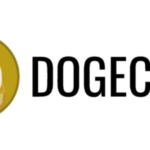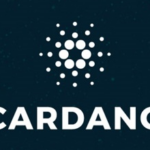Could Ethereum surpass the $5,000 mark by 2025?

Ethereum’s recent performance has been lackluster, with the cryptocurrency hovering in the low thousands and trailing behind its competitors. However, for those closely following the crypto scene, a surge past the $5,000 mark may not be as far-fetched as it seems, though it is far from certain.
In the volatile world of cryptocurrencies, market cycles and technological advancements are key determinants of price movements. Much like trends in traditional financial markets, the crypto market ebbs and flows in predictable patterns. A developer I spoke to elaborated on how these cycles present opportunities for those observant enough to capitalize on them. To propel Ethereum to greater heights, more than just positive sentiment is necessary—it requires significant improvements to its underlying infrastructure.
Industry experts, such as analysts at well-known publications like CoinDesk and Reuters, stress the importance of scalable solutions like layer-2 networks and sharding. These enhancements have the potential to reduce transaction costs and accelerate processing times, making Ethereum more attractive to both individual users and large-scale projects. The consensus among experts is that these upgrades are crucial for Ethereum to maintain its competitive edge.
The incorporation of artificial intelligence (AI) into blockchain technology presents a promising avenue for Ethereum’s growth. The fusion of AI with blockchain has the potential to revolutionize how transactions are conducted and resources are managed. By harnessing AI-powered agents, a future where smart contracts are executed seamlessly and network loads are automatically balanced becomes conceivable.
The integration of AI in blockchain technology is gaining traction, as evidenced by a startup I followed that used basic AI algorithms to optimize its supply chain solutions. This not only enhanced efficiency but also attracted significant investor interest. Should Ethereum establish itself as a platform for AI-powered applications, it could position itself as a strong competitor to emerging platforms like Solana, leading to increased investment and innovation.
Despite Ethereum’s robust developer ecosystem, it has long struggled with high transaction fees and slow processing speeds. The current average transaction cost on the Ethereum network is several dollars, with processing times often failing to meet modern digital standards. In contrast, platforms like Solana offer transaction fees that are a fraction of a dollar and near-instant processing. To remain competitive, Ethereum must address these bottlenecks to attract wider adoption, especially in sectors that rely on swift and cost-effective transactions.
For Ethereum to reach the coveted $5,000 mark, three critical factors must align: scalability improvements to enhance network efficiency, domination in the AI space to attract AI-integrated blockchain projects, and restored investor confidence through leadership continuity and progress in addressing longstanding issues. Overcoming these challenges will require strategic planning and execution to transform Ethereum into a leading platform for decentralized applications and innovative financial solutions.
In conclusion, while the path to $5,000 for Ethereum is fraught with challenges, opportunities for growth abound. By addressing scalability issues, leveraging AI integration, and restoring investor confidence, Ethereum has the potential to break through the $5,000 barrier and solidify its position as a market leader. Investors should stay informed and brace for volatility, as the coming months will be crucial in determining Ethereum’s trajectory in the ever-evolving world of cryptocurrencies.








